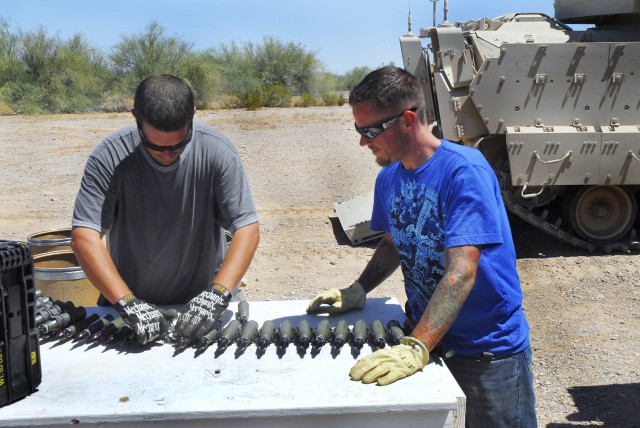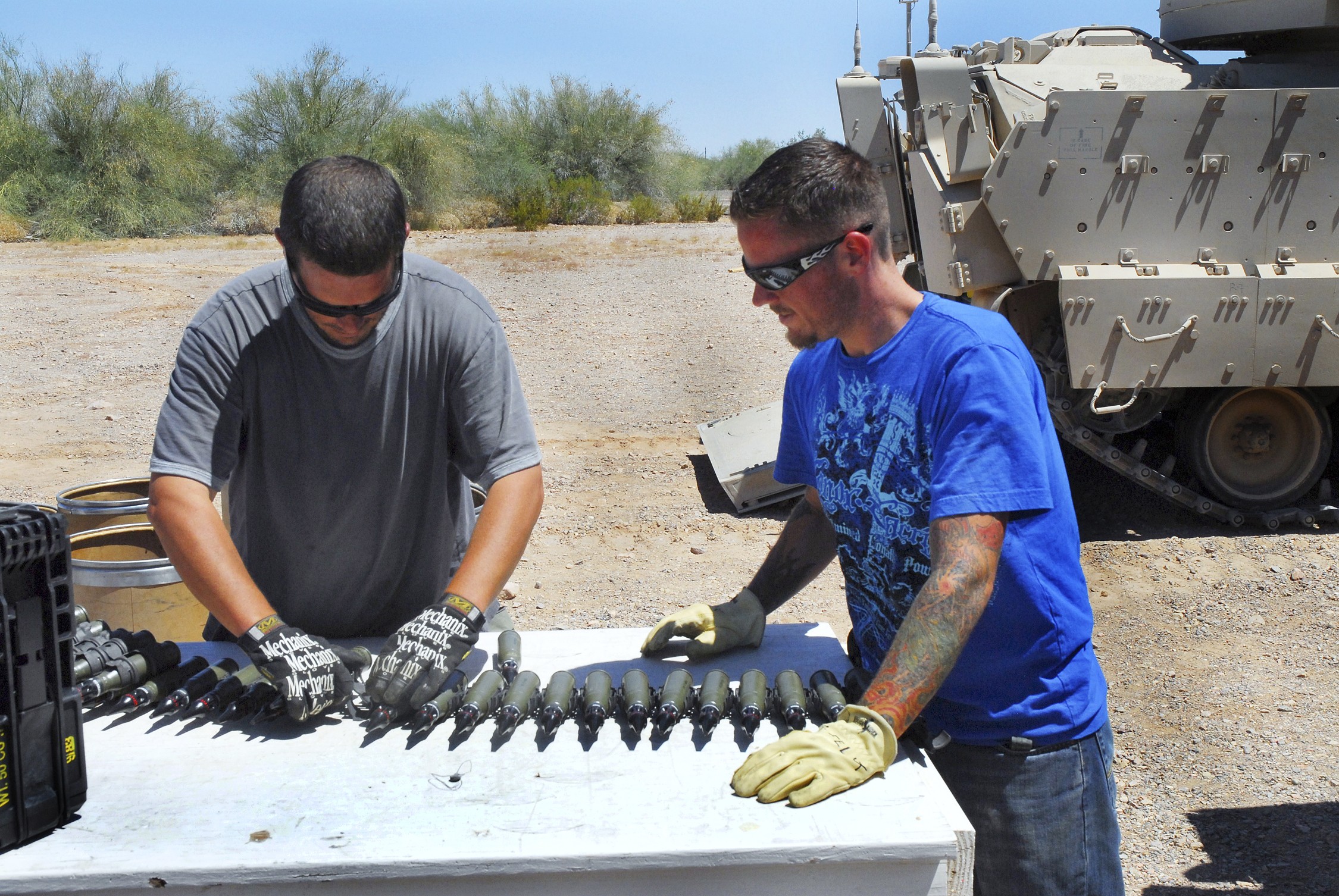WASHINGTON (Army News Service, Dec. 3, 2010) -- The process-improvement teams at Developmental Test Command's (DTC) Yuma Proving Ground (YPG) and White Sands Missile Range (WSMR) have been nominated for a Department of the Army award under the auspices of the Lean Six Sigma Excellence Award Program, or LEAP.
White Sand's project is designed to improve communications connectivity to instrumentation in the field. The team at DTC's Yuma Proving Ground initiated a project that improves its process for requesting munitions change orders.
YPG's project enabled the test center to avoid nearly $420,000 in costs during fiscal year 2009 alone, and it projects a cost avoidance of more than $3 million between fiscal years 2009 and 2015. White Sands is projecting a net cost avoidance of about $3.9 million for its project.
Six Sigma is a process-improvement strategy Motorola developed in the mid 1980s, but its roots as a measurement standard in product variation can be traced to the 1920s. Many measurement standards came on the scene later, but credit for coining the term "Six Sigma" goes to a Motorola engineer named Bill Smith.
One of its goals at the time was to improve its "process cycle time," which is the time required to complete a function, job or task from start to finish.
Toyota developed the Lean concept to improve its manufacturing operations and avoid significant costs by eliminating wasteful or inefficient practices. In the meantime, numerous government agencies and private industry have merged Lean and Six Sigma to work smarter and use manpower and money more efficiently.
Like martial artists intent on grappling with inefficiency, the people who study, understand and apply Lean Six Sigma principles to projects they undertake can earn certification as "black belts." The LSS black belt is an advanced practitioner who knows how to use various Lean Six Sigma tools as well as when and where to use them.
They not only lead the process-improvement effort but also mentor and coach team members, including Lean Six Sigma green belts, throughout a Lean Six Sigma project. With the additional training, some black belts can go on to become master black belts.
The intent of green belt certification is to develop team members with the basic skills to contribute to process-improvement projects. They operate under the watchful eye of the project team leader, who is usually a more advanced black belt or senior process-improvement practitioner.
WSMR's project achieved significant operational benefits that include reduced labor time and a 31- percent reduction in process cycle time.
"The Communications Connectivity to Field Instrumentation project has been our most successful project to date due to the extensive and detailed analysis that the black belt candidate, Sue Schlegel, completed," explained Cheryl Williams, who heads the process-improvement team at White Sands. "Her value-stream process mapping, use of the nominal group technique, weighting criteria, solution selection matrix, and use of other Lean Six Sigma tools in this project were superb."
"In addition, Sue and her team completed 12 'quick wins' or other documented improvements to the process prior to the completion of the communication connectivity project," Williams explained.
Value-stream mapping is a helpful method that can be used in lean environments to identify opportunities for improvement in lead time, which is the delay between initiating and executing a process. The nominal group technique is a decision-making method for groups of many sizes who want to make a decision quickly with everyone's opinions taken into account.
Group members give their views of a process solution with a short explanation and then eliminate duplicate solutions before ranking them. Weighting criteria refers to a method of identifying multiple options, rating them and then multiplying that by the "weight" of each criterion that goes into a decision-making process.
The solution-selection matrix is an essentially mathematical method of arriving at an objective decision when confronted with a variety of solutions. Quick wins are relatively cheap and easy initiatives that can be quickly implemented.
Williams said the high caliber of the project prompted WSMR to nominate it through DTC for the Army's 2011 LEAP Award.
"After they get past learning the LSS improvement process and time invested to examine their work process, they are surprised at just how much they didn't know about their own process and how their workload affects so many other processes," she said. "They learn a lot and solve mutual problems when they work with other subject matter experts on their project team."
YPG primarily achieved its cost-avoidance goals by reducing the lead time associated with requesting a change in ammunition to support its test mission, and by implementing new ammunition-loading requirements. Its process-improvement team also focused on enhancing the overall quality of this process.
Minerva Peters, who leads process improvement at YPG, said YPG's project revealed that requests for changes to ammunition loading were being made through multiple paths.
"Customers were requesting changes through the ammunition plant, the stock control section, or the ammunition planners section, thereby making it difficult or impossible to determine if a telephonic request was ever followed up with an email request or a change in the Range Test Scheduling System, or RTSS," she said. "Improvements to the process included modifying the ammunition-change-request template and providing detailed instructions and training on how to complete the form."
She said the ideal solution involved identifying the RTSS as the future "official" tool for requesting changes and modifying existing software to allow for changes.
But other issues were causing significant delays in improving the RTSS software, so the team focused on improving the telephonic change process to ensure that all requests were properly documented. This involved creating a change order log to be completed by the recipient of the change request and adding a step in the process that reminds those responsible to formalize their change request through email.
"YPG's customers now have a process with better controls for requesting ammunition, and they have been very supportive because they understand that the new process precludes possible miscommunication in how rounds are loaded," Peters explained. "It provides them a solid audit trail when requests to change the ammunition loads are processed."


Social Sharing